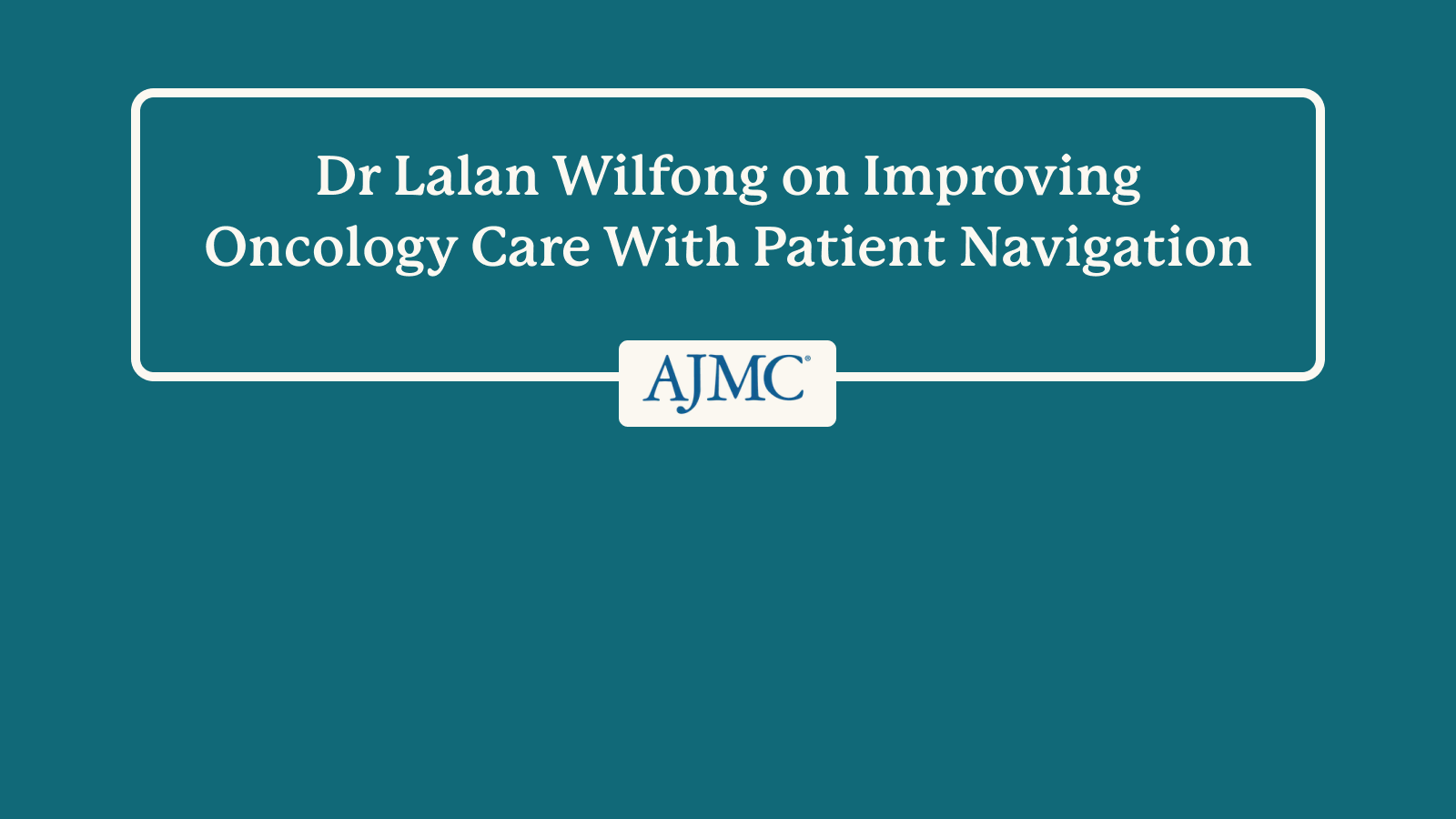Dr. Lalan Wilfong on Improving Oncology Care With Patient Navigation
The American Journal of Managed Care® (AJMC®): How does patient navigation fit into the Enhanced Oncology Model (EOM) and other payment models? What are the key requirements and expectations for patient navigation services under these models?
Wilfong: We're excited about the new navigation codes that CMS released earlier this year. They are allowed to be billed in the Enhancing Oncology Model, which is different than some of the other navigation codes that historically were able to be used, so that's super exciting.
Some of the challenges, though, are that the codes require 60 minutes of work a month for a patient in order to be billed, and that's quite a bit of time spent with these patients and making sure that you're documenting and doing the necessary work to be able to bill these codes appropriately.
On the flip side though, I was really happy that they relaxed some of the requirements around the billing, specifically around who is able to bill. The American Cancer Society, in particular, has a new program that will certify navigators for the ability to bill these codes that don't have to have advanced degrees, which allows us to have more flexibility in the staff able to help patients with these navigation services.
AJMC: What are the potential benefits and drawbacks of incorporating patient navigation services into different payment models?
Wilfong: The benefits of navigation services and payment models are vast. Patients that are at risk, specifically those that have social determinants of health needs, are the ones that typically have the highest hospitalization rates, the highest rates of ED [emergency department] visits, and the poorest outcomes. So being able to help them and really get paid for the work that we do to help them with their needs is vital for performance in any payment model so that those patients can have access to the highest quality cancer care available.
On the flip side in the payment models, as you bill and get paid for these services, it reduces your ability to achieve shared savings because those costs that typically Medicare or the other plans will pay you for those services, are incorporated into the total cost of care. It's a balance that practices must face between providing the services and billing for those services vs their ability to perform in an at-risk model like the Enhancing Oncology Model.
AJMC: How can the effectiveness of PIN codes be measured to improve patient outcomes and satisfaction?
Wilfong: The PIN codes typically should be focused on patients who are at risk, who have specifically social determinants of health needs. To measure that effectiveness, you really need to measure the interventions that we're doing against what, historically, those patients' outcomes have been.
I think some of the things that will be really fascinating to see as these navigation services are implemented are a reduction in emergency room visits, a reduction in avoidable hospitalizations, and improvement in access to care. They should be able to access medicines more easily and have better adherence to therapy because of the work that's being done by the navigators.
AJMC: How do you see the role of patient navigation evolving in the coming years? What new services or technologies might be incorporated into patient navigation programs?
Wilfong: Patient navigation will continue to evolve over time. We're just at the crux of understanding the benefits and how to implement patient navigation for our patient population. What I would like to see happen with navigation over time is instead of a static 60-minute billing code that we have to do is to make it more flexible, because our patient's needs will vary over time.
There are times, especially when starting therapy, that you're going to need to help them a lot. But once they are kind of in process, they may not need as much help for a while, unless they have a life event. If they have a life event like a death in their family, caregiver gets sick, or something else happens to them, they will need a ramp up in their navigation services. We need to figure out a way to make the payment models more flexible so that we can dig in when we need to for patient navigation, but yet back off when we don't, because nobody wants somebody calling them every day if they don't need them. But when they need something, they want you to be there. We need to make sure the payment models adjust for that.
Then we also need to make sure that we're paying for the right things. We assume and we think we know what patients need in these models, but we don't really understand that fully to this point. We need to make sure that we understand better, truly what the patients need and what services are benefiting from those and double down on the high value services, and then the low value services be thinking about, how do we not do those things for patients? There's a lot to learn in that regard.
I think as far as new payment models being thought of as practices take on more risk-bearing models, for example, we have to understand better the role of navigation and how that enhances performance in a total cost of care model. I firmly believe that it will improve the ability to perform in a total cost of care model as we're helping patients and mitigating some of the wasted care that they receive because they don't have access to high-quality care. And how do we incorporate that and show that there's value in providing these services in models where practices are being paid a little bit differently?

